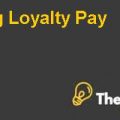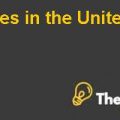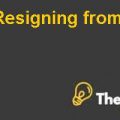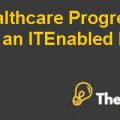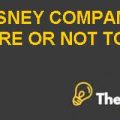Question 1
Low Utilization of Online care platform
The online care platform has potential to transform with health industry. It can provide common health/care services to patients, 24/7 from the comfort of their home. Although, it has many advantages and prospect, but yet, it has not achieved the expected growth. This is due to the many concerns posed by doctors, insurance providers, state laws and patients/clients regarding an online care platform which in-turn has resulted in low utilization. These concerns are discussed individually below:
Patients/Clients:Patients normally prefer to visit doctors/ primary care physicians (PCPs) or more recently retail clinics. The health care industry has been focused on physical visits to the doctor for centuries now and it is very difficult to change the mindset. According to case study, less than 1% of indirect members of American Well have used tele-health options in 2013. Among this 1%, 85% of the online care sessions were turned into physical visit, as observed by Ido, Co-founder of American Well. This also suggests that patients are not satisfied with an online care session and would eventually make visit to a doctor.
Health planner and insurance providers had been struggling to provide the services 24/7 due to shortage of doctors round the clock. This makes tele-health system unreliable and in-reality kills its purpose for both individuals and corporate clients. The cost is another factor whereby video conference of 10 mins costs a patient around $49 compared $20 co-pay through other means.
Doctors, Physicians and Specialists:There is already a shortfall of 3,200 new graduates every year in PCPs which indicates a high demand in the health care system. Additionally, it will be very difficult for insurance providers to convince the doctors to switch and work with them as the market for tele-health is very unstable and inconsistent.Limited marketing by the health plans may also be worrisome for the doctors willing to switch.
Insurance Providers (Payers): There is a long time lag from adopting the technology required for tele-health to providing the service to members. Normally, the health cover providers adopt a new system in stages whereby the system is tested in a particular geographic location and then extended to include other areas. The shortage of doctors and limited demand of online service also result in hesitation from insurance providers.
Laws: Some of states in America prohibit online prescription while some even have laws against tele-health sessions without prior in-person visit to the doctor.
Question 2
Direct-to-Consumers (DTC)
Direct-to-consumer (DTC) can prove to be a very profitable move for American Well. The prospect of such an application looks overwhelming if seen in isolation. There are many upsides to start the project but in my views, the cons over weigh the benefits. I agree with the views of Marry Modah, chief marketing officer and senior VP, on the channel conflict. The bigger picture shows a big conflict of interest for American Well with its current clientele. Many health plan clients will see American Well as a competitor and might break the relationship. Additionally, they might in future pose a bigger threat as rivals.
It will also impact heavily on the public image of the company and can be perceived as unethical move. American Well will also have to re-structure itself to do direct business with consumers as previously it was only focusing on B2B clients. New marketing and pricing strategy needs to be devised to attract consumers directly while competing with health planners. The size of the current Online care group (OCG) will not be able provide services to the increased demand and need more doctors to maintain the current wait time of 2.2 mins.
Question 3
The New Direction of American Well
Recently, American Well has changed its direction and has started promoting tele-health extensively by way of approaching employers and drugstore chains. It has also started a new product line namely Kiosks and provide health services through cubicles or rooms introduced across the country.This seems to be a positive step although some experts skeptical about the return on these investments.American Well The DTC Decision Case Solution
Fortune 500 can prove to be a game changer for the tele-health and can create big business for American Well. A few clients among Fortune 500 can bring in considerable revenue along with a platform for indirect marketing and promotion. Although, it is a great opportunity but yet American Well should only approach clients it can handle. Marketing through drugstores like Rite Aid is also good platform to promote the tele-health services. Such clients can provide stable revenue over the years through license fees.It is already talks with 2-3 other retail chains of roughly rite aids size. American Well should pursue the drugstores and pharmacies aggressively, and achieve the target of penetrating 67,000 stores by 2017.......................
This is just a sample partial case solution. Please place the order on the website to order your own originally done case solution.


